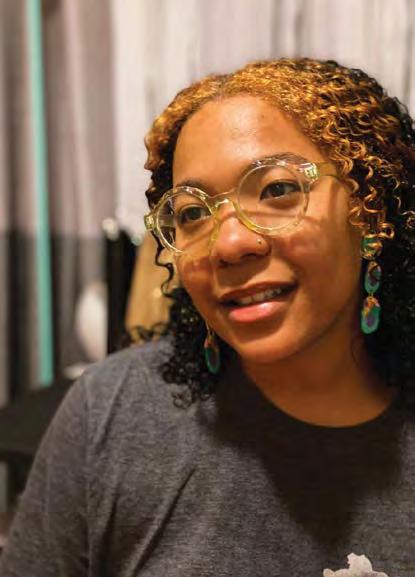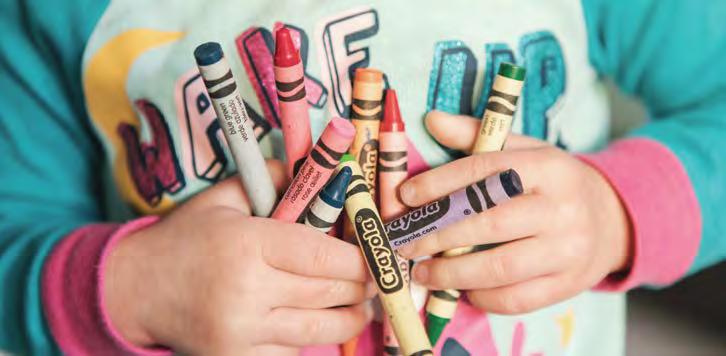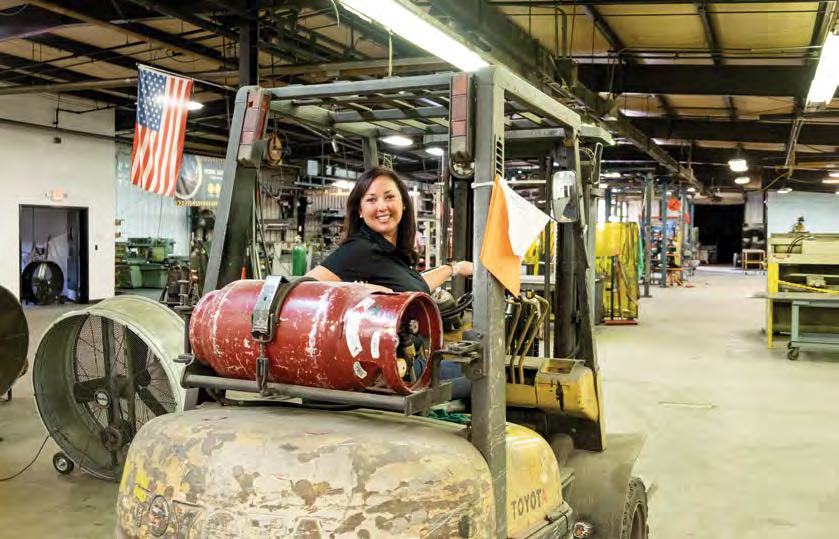
7 minute read
Family of the Future
Family
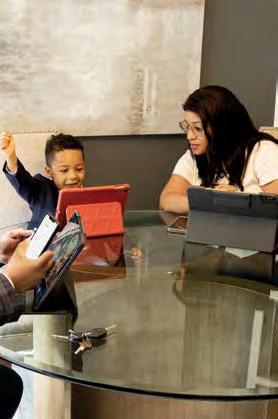
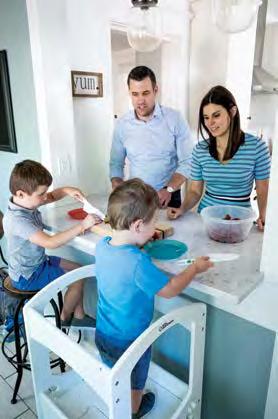
OF THE FUTURE
By Carrie Vittitoe Photos by Melissa Donald
One day, the history books will include paragraphs about the global pandemic of 2020 — how economies were impacted and how many people were sickened and died. But what may be left out in these general overviews of how the world changed is what steps individual families took to adapt and adjust to life in quarantine and under social distancing strategies. In 2020, the picture of how the family of the future will live is currently being redrawn.
PAGE 10 >>

SCOTT FAMILY: EVEN HOME SCHOOLING CHANGED
When public and private school families had to transition to online learning in March 2020, it might seem that families that homeschool had it easy. They were already learning at home so no problem, right? But homeschool families don’t stay home constantly, and many families had to incorporate a remotely-working parent into the stay-athome structure. Rebecca Duvall Scott, who homeschools her children, Annabelle, 12, and Jacob, 10, and is also a director of a homeschool cooperative and the author of a book on sensory processing differences, had to make adjustments to re-envision what her family life was going to be.
What adjustments did your family have to make during quarantining?
The first few weeks were difficult. While the kids and I were used to staying home most of the time and working together on school work, it was a big transition for us to blend my husband, Eric, a senior manager CPA at Ernst & Young, into home life, and for him to blend us into his work life. The kids and I grieved over the loss of church services, library programs, our cottage school, and co-op classes. It really felt like productivity ground to a halt, and we all just went through the motions of our day, overwhelmed to the point of exhaustion. I started keeping todo lists for my endless days, and slowly new, flexible routines emerged.
What were some positives that came out of the adjustments?
Family time took on a whole new meaning when there is nothing else to do except be together. The kids started playing together more, Annabelle started cooking with me, and both kids got to get on the roof with their daddy and help clean out the gutters. We’ve also had more time for family walks, game and movie nights, and we’ve started reading The Chronicles of Narnia before bed. The closeness we’re gaining is definitely a silver lining.
The Scott Family
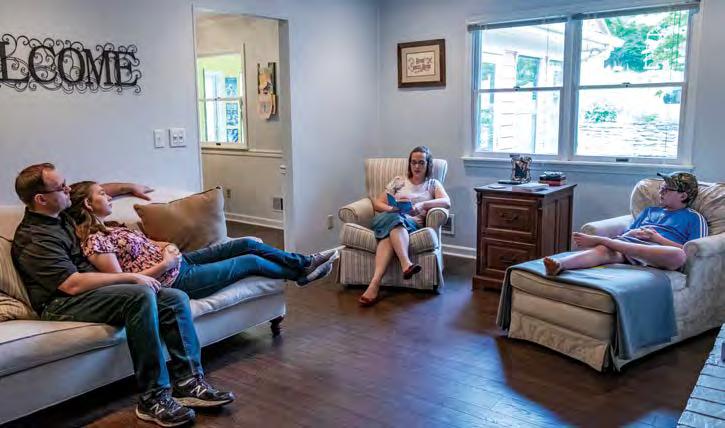
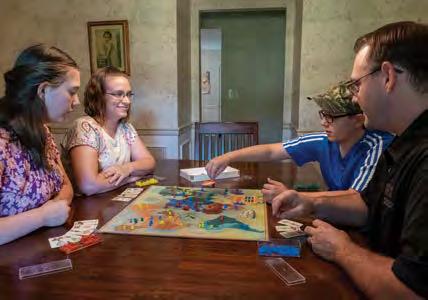
You had been promoting your memoir, Sensational Kids, Sensational Families, prior to the pandemic. How have you
adapted professionally, and how are you fitting in restorative alone time?
I’ve been writing a series for LinkedIn called Look for the Good, and I’ve got a Facebook group where I’m blogging about how we’re desensitizing Jacob to wearing a mask. We’re still promoting but in a reach-out, self-help kind of way. It is quite difficult to find alone time when your family is living on top of one another 24/7. I usually sneak away to a quiet part of the house where I can read or focus on co-op planning. Sometimes I’ll go outside and garden as well. Just the fresh air and doing something mindless like pulling weeds to create a clutter-free patch of flowerbed is rejuvenating.
PAGE 12 >>

HOUSE-MANSFIELD FAMILY: STEPPING UP THROUGH CHAOS
During COVID-19, teachers have been tasked with not only continuing instruction of their students online but with trying to balance the education of their own children as well. Melanie House-Mansfield has continued to be a high school theater instructor, as well as provide preschool activities and speech therapy protocols for her 4-year-old son, Israel. All of this would be quite a balancing act on its own, but she is also the primary caretaker of her mother, Amelia Blossom Pegram, who has dementia and is now in rehab following a fall shortly before quarantining began. Melanie and her husband, William, have been living in her mother’s house while also trying to supervise renovations to their condo, which was vandalized prior to the pandemic.
What do your days look like?
I get up at 7am. I’ll fix some stuff for when my son wakes up; I can give it to him so that will occupy him for a while. I get online and have set office hours. I’m grading papers, texting students, creating things for them to do, and I’m on Google Meets. I also field phone calls and do age-appropriate school with Israel.
Are you able to get any alone time?
At this point, we have to steal time. Sometimes it takes saying, “Mommy or Daddy is in the vacation room,” (a small room that we have) and one of us becomes the primary. You do have to take time for yourself, but at this point, it is the time to step up. It feels to me like how homesteading might have been, when people were hacking it out and doing the things they needed to do to survive.
What does family time look like?
We carve out time to be around one of our neighbors who we’ve known for a long time and who knows my mom. He lost his wife not too long ago. We’ve done cookouts where people are sitting on chairs in their own areas. You have to socially distance but socially connect at the same time. We go for walks; the neighbors look forward to seeing Israel as we walk in the neighborhood.
Your position at your school has been overstaffed, and you’re uncertain about where your mother will go after rehab. How do you manage this uncertainty during the uncertainty of a pandemic?
I know that I’ll get the call as to where I’ll be [teaching] next year because my school is overstaffed. We will have to find a place for mom; we will figure it out as a family. My mom was exiled from South Africa during the apartheid regime and ended up in England. She was able to be an actress and a teacher. If my mom can make it through all those unknowns, I can, too. Faith plays a part in it, too.
PAGE 14 >>
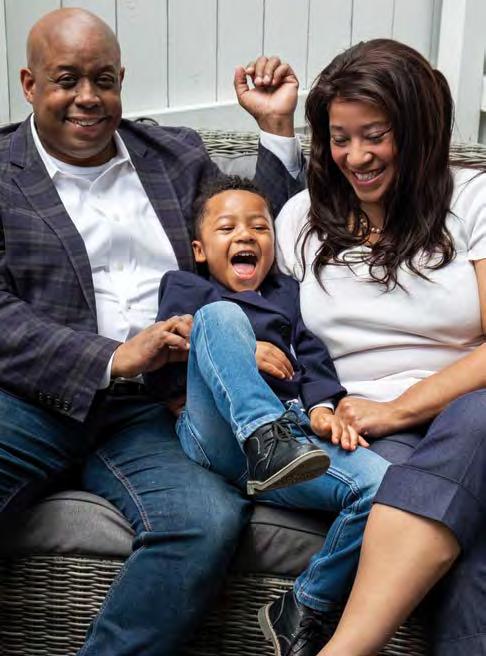
The House-Mansfield Family
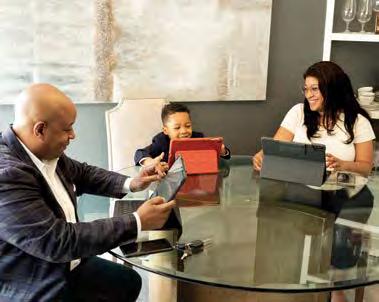

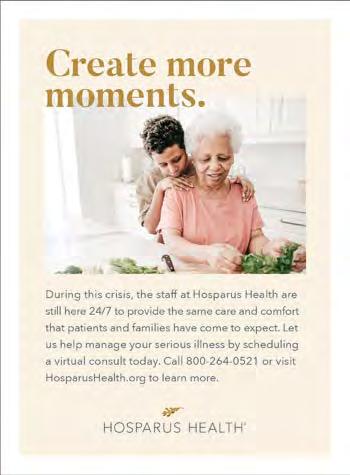


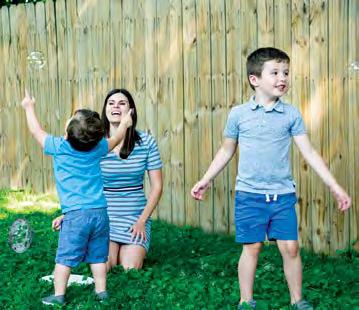
HAMILTON FAMILY: FINDING SIMPLICITY
Being with small children every day without being able to get out for adult conversations and distractions is hard at the best of times, but it is especially difficult when isolating continues for weeks and weeks. Although Angel Hamilton was a stay-at-home mom to her two sons, Christian, 4, and Isaiah, 2, prior to the pandemic, she has had to adjust her routine and expectations.
What does the structure of your days look like?
Coming from a family that lacked structure to working with inner-city kids, whether that be in youth programs or as a teacher, I know that kids need some kind of routine. We do have one, but it is not rigid. Most days, we start with a song, a story book on YouTube, and a craft. That’s usually an hour of fun in the morning, and then I hand it over to a Zoom meeting with my son’s chapel teacher from my 4-year-old’s school. Then it’s playtime, followed by lunch and naps.
What do meal times look like for your family now?
Meals are much better now. My husband, Dustin, traveled or worked late and was either not home for supper or would get home after we finished eating. Now we all eat together, share stories, laugh as the kids are silly with their food, and roll our eyes together as they refuse to eat the thing they ate the day before with no complaints. Something about sharing in that meal together each night has brought my husband and I closer.
What did family time look like before the pandemic, and what does it look like now?
Prior to COVID-19, our weekends looked like outings based around our kids’ interests — parks, zoos, and museums. Now that has stopped, and, honestly, that has been hard. But we have found ourselves spending more time in the yard playing basketball or catch, pushing the kids on the swing, or just letting them make mud pies. Somehow that simplicity of activities has helped us slow down and just appreciate the moment. Before we were filling our to-do calendars and rushing off to the next thing. Now the days with our kids seem longer and that isn’t necessarily bad because our babies don’t stay babies for long.


